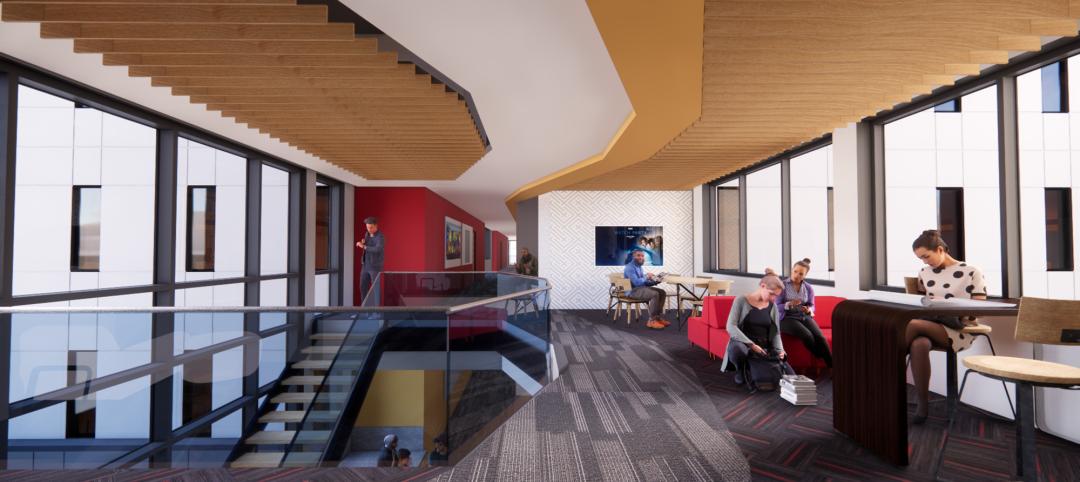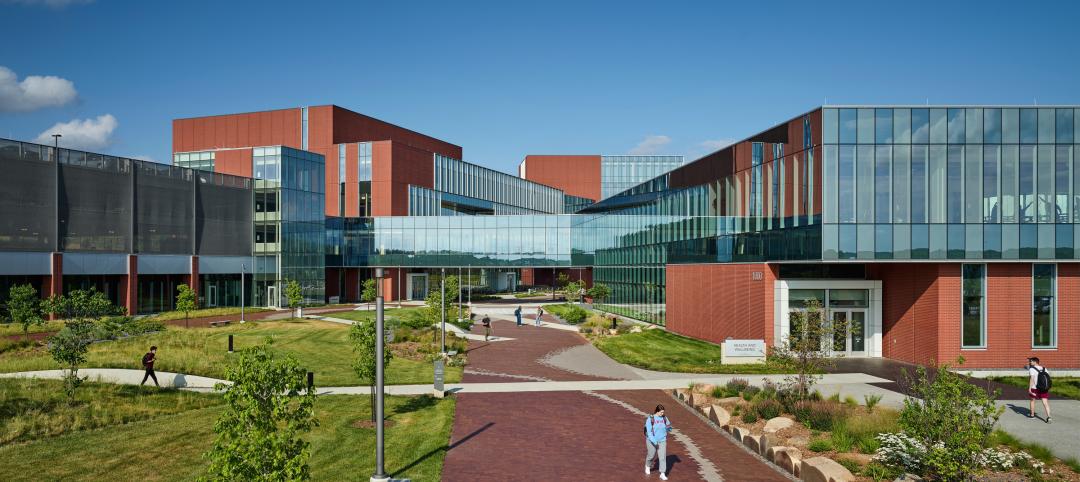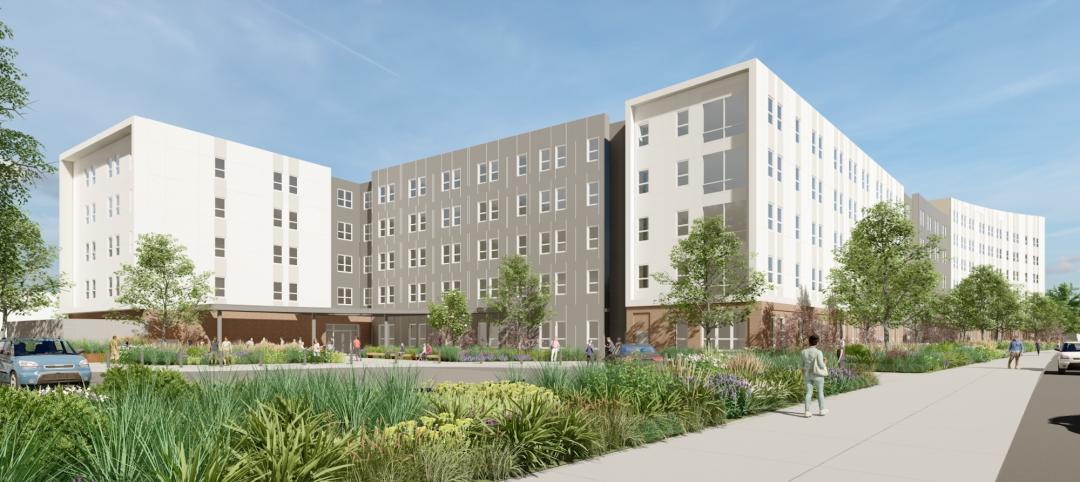Ten years ago, the Regents of the University of California allocated $235 million in bonds (later widened in scope and bumped up to $285 million) to build a replacement hospital on its Irvine campus. The Regents had taken over an existing hospital from Orange County, one that could not be reconstructed to meet California's rigorous SB 1953 seismic requirements. In early 2004, when the bids were opened, the lowest came in a staggering $59 million over budget. This was at a time when prices for steel, concrete, and gypsum board were soaring, MEP engineering firms capable of handling a complex hospital project were not available, and some specialty trades were reporting bid increases of 10-20% a week.
By that summer, the old hospital was being torn down and the site was being cleared, and still no contractor had been hired. At last, in October 2004, Hensel Phelps Construction Co. was awarded the job and given 48 months to deliver a completed building. No matter that the local office of Hensel Phelps had never built a ground-up new hospital (nor, for that matter, had UC Irvine), nor that it intended to do so under design-build—a delivery method that the oversight agency, the Office of State Health Planning and Development (OSHPD), had zero experience with.
Building a relationship with OSHPD
OSHPD has a reputation for being arguably the toughest building authority in the country. The Building Team — Hensel Phelps (GC), HOK (architect), Nabih Youssef Associates (structural engineer), and TMAD-Taylor & Gaines (MEP engineer) — knew that it would have to earn OSHPD's respect and confidence, especially given the agency's trepidation about its first design-build project. At the same time, OSHPD recognized that it had to be open to the concept of design-build or it might not be able to deliver the $41 billion in SB 1953 projects for which it was responsible.
UCI and Hensel Phelps staff started off by holding the fairly customary array of ad hoc field meetings, monthly management meetings, and quarterly executive meetings with OSHPD to review upcoming work and establish priorities.
But the team went much further than that. UCI created the position of "OSHPD Expeditor" to coordinate all OSHPD-related activities—change orders, site visits, etc. The team also pledged to submit only detailed, complete designs with all required backup to OSHPD, provided the agency would reciprocate by meeting review deadlines in timely fashion. To their mutual credit, neither party missed a single deadline over the course of the nearly four-year project.
The university also promised OSHPD that all design packages would be meticulously reviewed by UCI staff before submitting them to OSHPD; to accomplish this, UCI allocated professional architects and engineers to staff the review team. Hensel Phelps appointed a QC manager to make sure submittals were complete and ready prior to inspection requests, and all RFIs were processed by UCI's quality assurance team. UCI found that this "shoulder-to-shoulder QA review" between its professionals and OSHPD staff helped to remove anxieties on OSHPD's part about the accelerated pace of review under design-build.
In yet another effort, UCI paid for extra training for its in-house inspectors of record to become OSHPD-certified Class A inspectors and hired a veteran lead IOR to head its team of five OSHPD-approved inspectors. UCI devised a Web-based inspection request system to enable the Building Team to submit and track inspections online. To maintain continuity and consistency, IOR responsibilities were designated by scope of work, not by location in the building.
For its part, OSHPD made critically important concessions. The agency relaxed pre-qualification requirements for 10 subcontractor trades. Bid documents were streamlined from 58 alternatives to three. Technical submittal requirements were reduced by 70%. The field information and decision-making process with OSHPD was streamlined to reduce risks.
How the Building Team cut $63 million in costs
Hensel Phelps and its partners in the Building Team worked under a "best and final offer" process, which capped the first phase of the hospital and the central plant at a maximum acceptance cost of $250 million. Later, additional scope, including get-ready work for phase two of the hospital, was added to the project, bringing the total acceptance cost to $285 million. In the end, the Building Team brought the job in for $283 million.
Value engineering saved $35 million without jeopardizing the building program. This was accomplished by reducing floor heights from 18 feet to 15 feet and overall building height by seven feet, "diminishing" an iconic tower, and using precast building skin in lieu of stone. Changing the structural system from moment connection to brace frame with gusset plates and exposed braces saved 1,600 tons of steel.
Roof-mounted cooling towers were deleted in favor of air-cooled towers on the ground. Operating room air handlers were placed in the basement instead of in mechanical space on the third floor
Another $28 million was saved through scope reductions (such as eliminating a proposed campus circulation arcade) and deferring certain items — rooftop gardens, an outdoor dining area — to a later phase.
Checks and balances were instituted to make sure the public good was protected. Two independent cost estimators were hired, one to price bid documents and advise if changes were needed in program scope, another to prepare sealed cost estimates to be opened at the time of bid. A third-party general contractor was brought in to review subcontractor bids and provide advice during bid negotiations.
Early in the planning, UCI instituted an integrated project delivery program (now known as "Align 2 Redefine") that led to two significant improvements: the foundation was reconfigured to allow for a basement across the full building footprint; and a 27,000-sf bonus shell space was created for a new radiology department in Phase two.
The project closeout also demonstrated excellent team effort. From the outset, UCI planned for an at-once construction final and certificate of occupancy for the entire hospital—partial occupancy or "staff and stock" approval would not be acceptable.
To meet this requirement, the Building Team, UCI's inspectors, and OSHPD staff sequenced all the inspection activities to a rigorous timetable. OSHPD dispatched six Fire Marshal Academy staff to conduct fire alarm, door contact hardware, stair pressurization, and above-ceiling fire-stopping inspections. A team of 15 was assigned to conduct fire alarm testing over several days.
UC Irvine Douglas Hospital became the first large-scale OSHPD project to finish on time and within budget, in fact, four months early and $2 million below the $285 construction budget. In evaluating this achievement, Rebeka G. Gladson, FAIA, UCI's associate vice chancellor and campus architect, praised Hensel Phelps's "unparalleled ability in the management and delivery of this complex project" and suggested that the relationship between the university and its Building Team be viewed as "a model for the entire industry to replicate." In bestowing Platinum honors on this project, the Building Team Awards jury concurred with this assessment.
PROJECT SUMMARY
Platinum Award
UC Irvine Douglas Hospital at the University of California Irvine Medical Center
Orange, Calif.
Building Team
Submitting entity: University of California, Irvine (owner/developer)
Architect: HOK
Interior architect: Dave Keaggy & Associates
Structural engineer: Nabih Youssef Associates
MEP engineer: TMAD–Taylor & Gaines
General contractor: Hensel Phelps Construction Co.
General Information
Project size: 474,353 sf
Construction cost: $283 million
Construction time: December 2004 to September 2008
Delivery method: Design-build
Related Stories
Construction Costs | Oct 16, 2024
Construction Crane Index: Most major markets’ crane counts increase or hold steady in third quarter
Rider Levett Bucknall’s (RLB’s) latest Crane Index and Quarterly Cost Report shows continued decreasing cost inflation and crane counts increasing or holding steady in 10 of the 14 major markets it surveyed. The national average increase in construction costs was 1.07%, the lowest it’s been in the last three years.
AEC Tech | Oct 16, 2024
How AI can augment the design visualization process
Blog author Tim Beecken, AIA, uses the design of an airport as a case-study for AI’s potential in design visualizations.
University Buildings | Oct 15, 2024
Recreation and wellness are bedfellows in new campus student centers
Student demands for amenities and services that address their emotional and mental wellbeing are impacting new development on college campuses that has led to recreation centers with wellness portfolios.
Higher Education | Oct 14, 2024
Higher education design for the first-gen college student
In this Design Collaborative blog, Yogen Solanki, Assoc. AIA, shares how architecture and design can help higher education institutions address some of the challenges faced by first-generation students.
Performing Arts Centers | Oct 10, 2024
Studio Gang's performing arts center for Hudson Valley Shakespeare breaks ground
A new permanent home for Hudson Valley Shakespeare, a professional non-profit theater company, recently broke ground in Garrison, N.Y. The Samuel H. Scripps Theater Center includes a 14,850 sf performance venue that will serve as a permanent home for the theater company known for its sweeping open-air productions of classics and new works.
Sustainable Design and Construction | Oct 10, 2024
Northglenn, a Denver suburb, opens a net zero, all-electric city hall with a mass timber structure
Northglenn, Colo., a Denver suburb, has opened the new Northglenn City Hall—a net zero, fully electric building with a mass timber structure. The 32,600-sf, $33.7 million building houses 60 city staffers. Designed by Anderson Mason Dale Architects, Northglenn City Hall is set to become the first municipal building in Colorado, and one of the first in the country, to achieve the Core certification: a green building rating system overseen by the International Living Future Institute.
3D Printing | Oct 9, 2024
3D-printed construction milestones take shape in Tennessee and Texas
Two notable 3D-printed projects mark milestones in the new construction technique of “printing” structures with specialized concrete. In Athens, Tennessee, Walmart hired Alquist 3D to build a 20-foot-high store expansion, one of the largest freestanding 3D-printed commercial concrete structures in the U.S. In Marfa, Texas, the world’s first 3D-printed hotel is under construction at an existing hotel and campground site.
University Buildings | Oct 9, 2024
Des Moines University Medicine and Health Sciences opens a new 88-acre campus
Des Moines University Medicine and Health Sciences has opened a new campus spanning 88 acres, over three times larger than its previous location. Designed by RDG Planning & Design and built by Turner Construction, the $260 million campus features technology-rich, flexible educational spaces that promote innovative teaching methods, expand research activity, and enhance clinical services. The campus includes four buildings connected with elevated pathways and totaling 382,000 sf.
Student Housing | Oct 9, 2024
University of Maryland begins work on $148 million graduate student housing development
The University of Maryland, in partnership with Campus Apartments and Mosaic Development Partners, has broken ground on a $148.75 million graduate student housing project on the university’s flagship College Park campus. The project will add 741 beds in 465 fully furnished apartments.
Healthcare Facilities | Oct 9, 2024
How healthcare operations inform design
Amanda Fisher, Communications Specialist, shares how BWBR's personalized approach and specialized experience can make a meaningful impact to healthcare facilities.

















